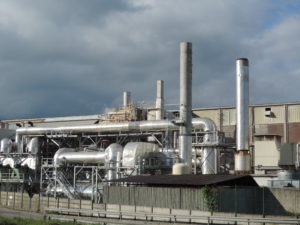Cogeneration is the combined production of electrical or mechanical and thermal energy obtained by the same primary source. A cogeneration plant is built of a gas turbine connected to an electrical generator. Its exhaust feeds a heat recovery system, generally consisting of a waste heat steam generator and, in some cases, one or more exhaust/water heat exchangers. In order to be efficient, a cogeneration system must be designed based on thermal needs, which are usually limited to the steam production. But if all the electrical consumption needs are to be covered, the exhaust heat generated by a properly selected gas turbine exceeds the capacity to obtain the steam necessary to the tissue machine. Therefore, there is a remarkable potential to increase the energy efficiency. The real game changer comes from the utilization of the turbine exhaust gases directly for tissue drying. The exhaust flue gases can be directly conveyed to the drying process of tissue products. The energy efficiency of the global system is increased and energy costs are drastically reduced. Energy optimization also reduces environmental impact, as energy efficiency improves, while greenhouse gas emissions diminish. At the same time, costs related to tissue drying are nearly or completely eliminated.
Valmet has been a leader in the cogeneration field for over 15 years and has constantly developed and optimized the tissue production related systems.
Solar Turbines, with its subsidiary Turbomach, is the undisputed market leader of gas turbine electrical generators.
Over the years, Valmet and Solar Turbines/Turbomach have developed the proficiency in feasibility studies to discover the best configuration of a cogeneration plant, offering a completely new perspective aimed at setting higher standards in the energy and tissue making fields.

